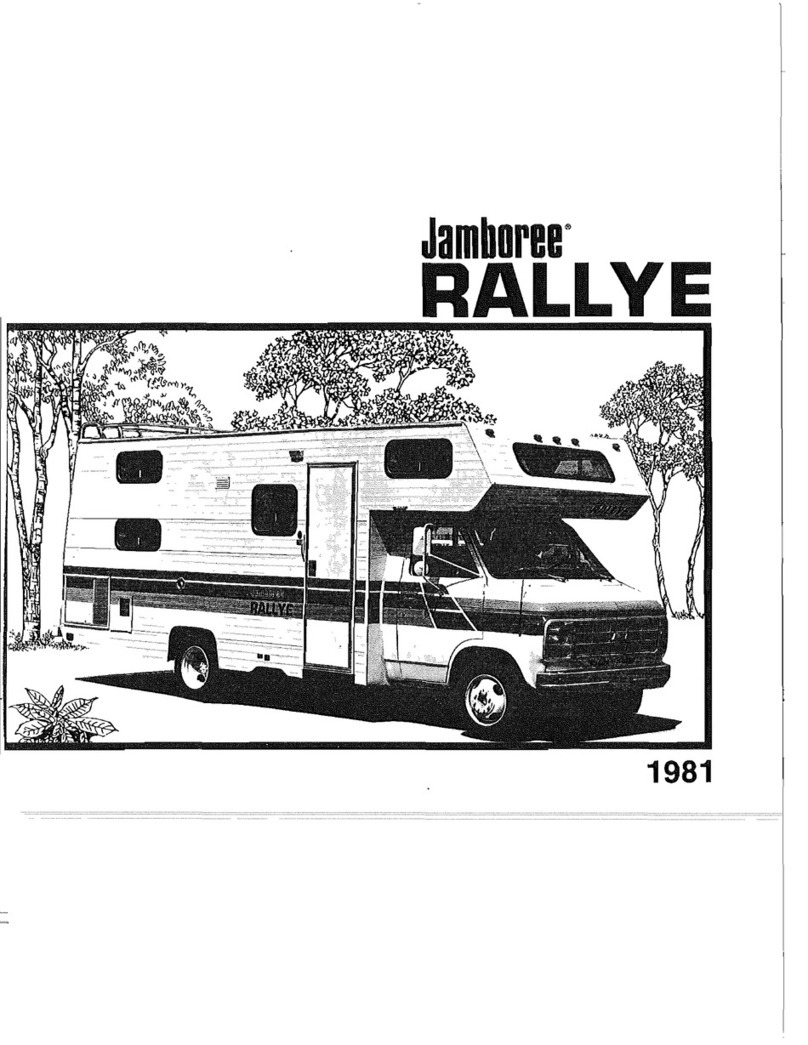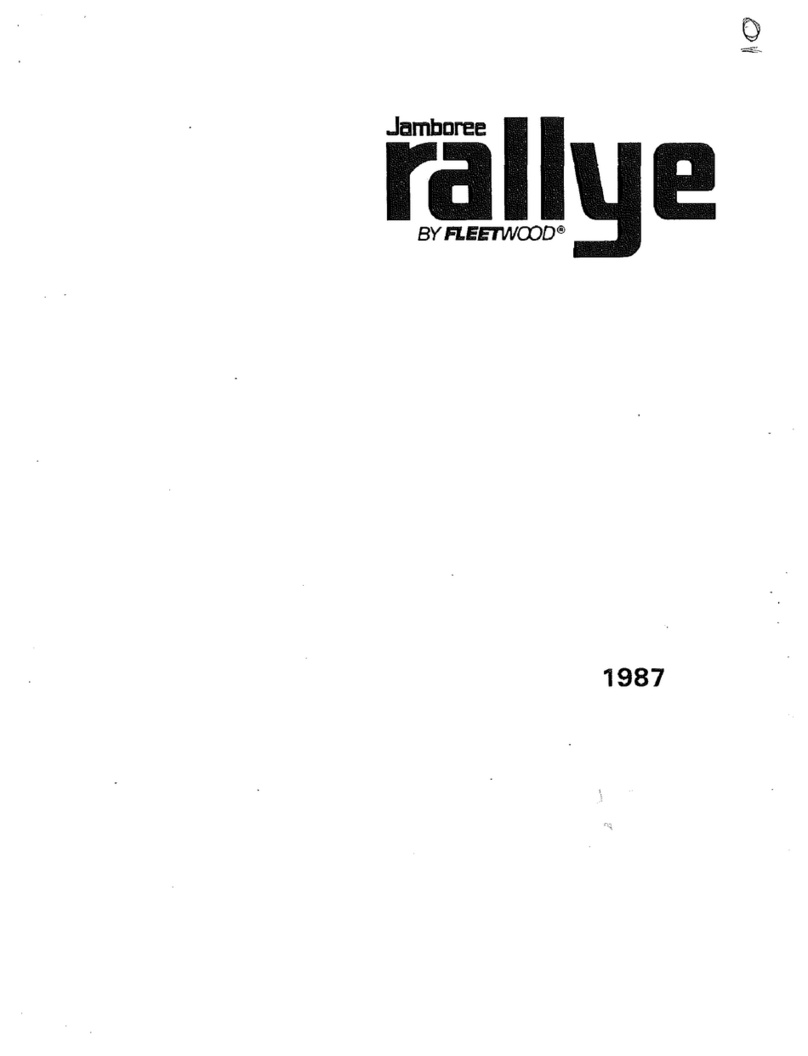
TABLE
OF CONTENTS
WARRANTY
Entry Doors and Screens ....................................13
NOTICES
AND
WARNINGS Windows ............................................................. 13
Introduction
.............................................................1 EmergencyExit Window ................................. 13
Side Slider Windows .......................................13
Warranties............................................................. 1 Sun Visors ...........................................................
13
Reporting Safety Defects ......................................2 Mini-Blinds ..........................................................
13
Owner's Information Package ...............................2
Chassis
and
Vehicle Identification.........................3 Storage ............................................................... 13
Exterior Compartments...................................13
On
the
Road
.............................................................5 InteriorStorage ...............................................
14
Motor
Home
Loading ............................................5 Interior and Furnishings ......................................
14
Responsibility for ProperLoading.....................5 Dinette Conversion .........................................
14
A Few Definitions First ...................:......:...........5 Sofa/Lounge Conversion.................................14
Towing a Vehicle
or
Trailer ....................................5 Folding Doors/Privacy Curtain Dividers .........
14
Carrying Capacity
and
Load
Distribution ......... 6 InteriorLighting ...............................................15
How to Weigh Your Loaded
Motor
Home Overhead Vents .............................................. 15
Without a Trailer
or
OtherTowed
Load
............. 6 Bunk LadderInstallation .................................15
How
to Weigh
Your
Loaded
Motor
Home Monitor Panel ...................................................... 15
With a Trailer
or
OtherTowed
Load
.................. 7
Loading Tips .....................................................7
Tires ......................................................................8
Tire Inflation ......................................................8
Tire Replacement .............................................8
Effects
of
Long Term Occupancy ........................16
Ventilation
and
Controlling Condensation ...... 16
Fire Safety........................................................... 16
Fire SafetyPrecautions...................................
17
Smoke Detector..............................................
17
If
You
Geta Flat Tire .........................................8
Spare Tire Carrier.............................................8
Changing a Flat Tire .........................................9
Seats
and
Seat Belts ............................................9
Plumbing
Systems
................................................
19
Fresh Water System ...........................................
19
City
Water Connection ....................................
19
Driver/PassengerSeats ....................................9
Seat
Belts .........................................................9
The Water Pump.............................................20
Water Filter .....................................................
20
Child Restraint ..................................................9 Troubleshooting the Fresh Water System ......
20
Driving
and
Parking...............................................9
Fuel and Fuel Systems .......................................
10
FuelFill ........................................................... 10
Leaks ..............................................................20
Sanitizing the Fresh WaterSystem ................
20
ExteriorShower..............................................
21
FuelTypes
and
Vapor Lock.............................10
General Chassis Topics ......................................
11
Variable SpeedEngine Fan ............................
11
Exhaust System Heat.....................................
11
Waste Water System...........................................
21
Toilet ...............................................................
21
Draining the HoldingTanks .............................
21
HoldingTank Care ..........................................
22
Carbon Monoxide
Electrical
Systems
.................................................
23
Safety Precautions ..............................................
11
Chassis Electrical System ...................................
23
Carbon Monoxide Detector.............................
12
Chassis Bulbs
and
Fuses ...............................
23
EmergencyTowing ..............................................
12
12-Volt Coach System.........................................
23
Attaching Accessories
to
Your
Motor
Home ................................................
12
Engine Temperature
Gauges
..............................
12
BatteryDisconnect..........................................23
AuxiliaryStartSystem.....................................
23
BatteryInspection
and
Care ...........................23
Living
with
Your
Motor
Home
..............................
13
BatteryCharging.............................................
24
Manual Entry Steps.............................................
13
Selecting a Replacement Battery ...................
24
EntryAssist Handle .............................................
13
120-Volt System ..................................................
24






























